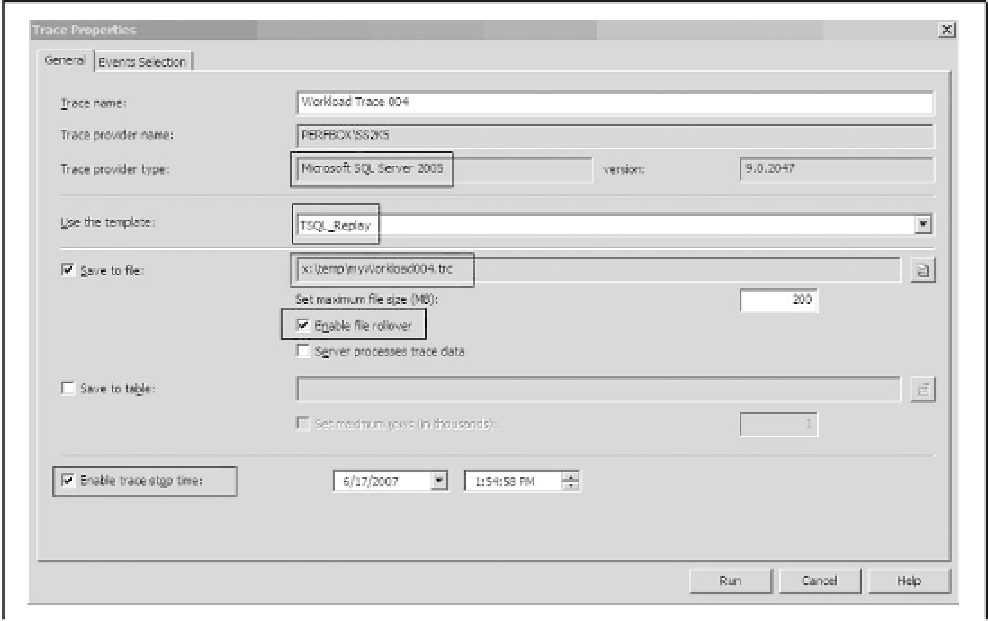Databases Reference
In-Depth Information
Figure 10-4
If you use SQL 2005 Profiler to create and capture a workload on a SQL Server 2000 instance, be aware
that the trace provider uses Microsoft SQL Server 2000 (see Figure 10-5). This means that if you use the
TSQL_Replay template, it uses the event class definitions in SQL Server 2000. If you want to replay this
workload in SQL 2005 Profiler, it is a good idea to define a new user template to correlate with the SQL
2005 TSQL_Replay template definition.
Modifying aWorkload in a Trace Table for Special Needs
SQL Server 2005 Profiler offers a limited filtering capability when replaying a workload. You can filter to
replay trace events for a specific system server process ID (SPID) or a specific time-range, but you cannot
replay based on an application, a database, or a user login. When it is necessary to focus on a smaller
scope, you may want to make a subset workload from the original workload.
MakingaSubsetofaWorkload
There are two main approaches to making a subset of a workload. The first option is to open the workload
file in Profiler. From the Events Selection tab, use the column filters to bring up the Edit Filter dialog box,
and then configure the filter as shown in Figure 10-6. Save the trace data to a new workload file.
If the workload data is already in a database table, the second option is to use T-SQL statements to create
a subset of the workload. Alternatively, workload data can be saved as an XML file, thereby allowing
you to modify the contents manually or programmatically.













Search WWH ::

Custom Search